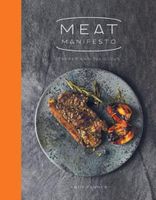Advertisement
How to Render Fat
Appears in
By Andy Fenner
Published 2017
- Ask your butcher for fat trimmings or, if you’re trying a little home butchery, set aside the fat scraps.
- The key to rendering animal fats is to cook them low and slow.
- To begin, separate meat that may still be attached from the fat (and keep it aside for cooking later).
- Cut the clean fat into cubes and place them in a deep pot on the stovetop to heat over a very gentle heat. Otherwise, lay them out on a baking tray and put them into an oven, preheated to 120°C.
- Render the fat until it’s a clear liquid. It might also contain small, crispy brown bits (the unavoidable bits of meat that could not be trimmed). Be careful during the slow heating – if the meaty bits burn, they can ruin the rendered fat, so stir often.
- Once the fat is rendered down to liquid form, strain it through a clean muslin cloth into glass jars and store in the fridge (where it can have a very long shelf life). When cooled, it will solidify. As soon as it’s spooned into a hot pan (three or four tablespoons are generally a good start), however, it will quickly become liquid.

